Curb dahlias: types, planting and care
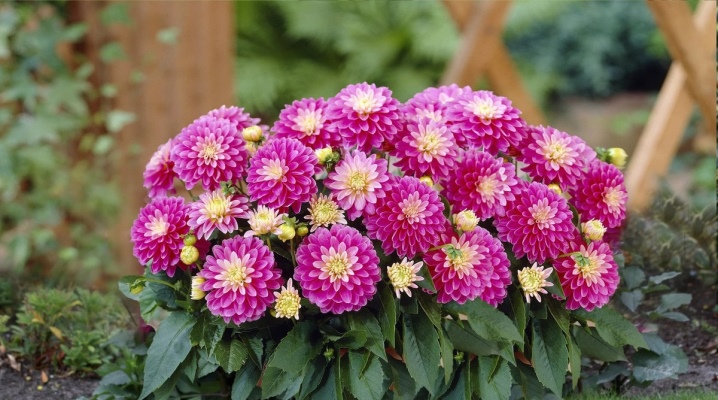
Curb dahlias are low-growing perennial plants. They are used for planting in gardens, front gardens, flower beds, framing paths and fences.
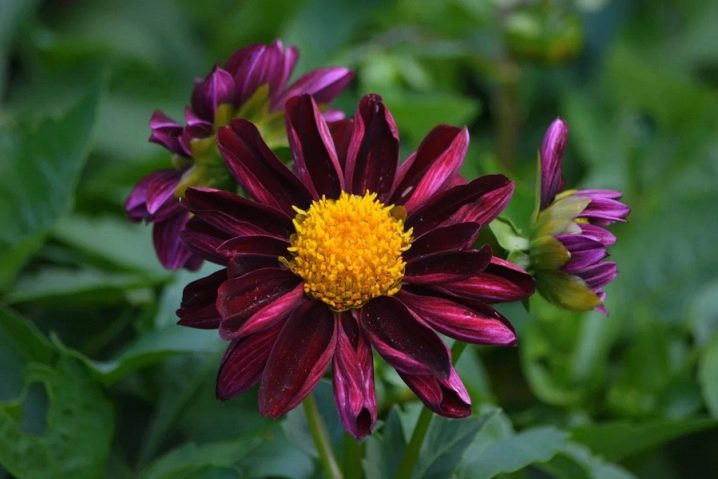
Peculiarities
Low-growing dahlias, called border dahlias, form a small dense bush with bright flowers and a large number of leaves of a rich green color. The leaf plates have pronounced veins, the edges can be either even or serrated. The diameter of the flowers can vary from 10 to 20 cm. The description of the flowers differs depending on the species. The petals are rounded, long, straight or twisted, of different colors.
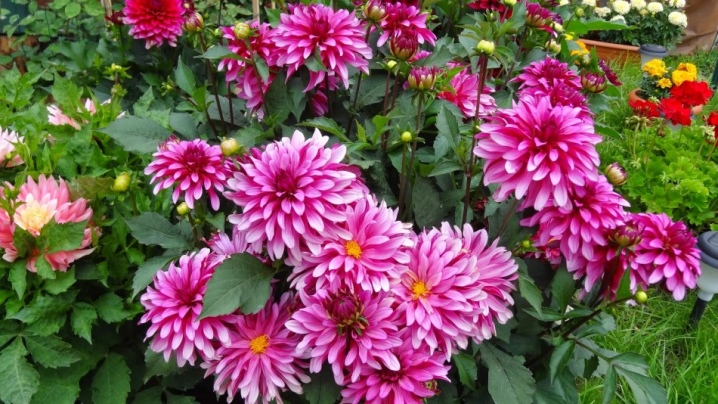
The main difference in caring for border dahlias from ordinary ones is that there is no need to pinch and tie them up. Plants themselves form voluminous bushes that do not need support. At the same time, low-growing varieties bloom much longer and more abundantly than tall plants. Border dahlias reach a height of 60 cm. By flower size, they are divided into small, medium and large-flowered.
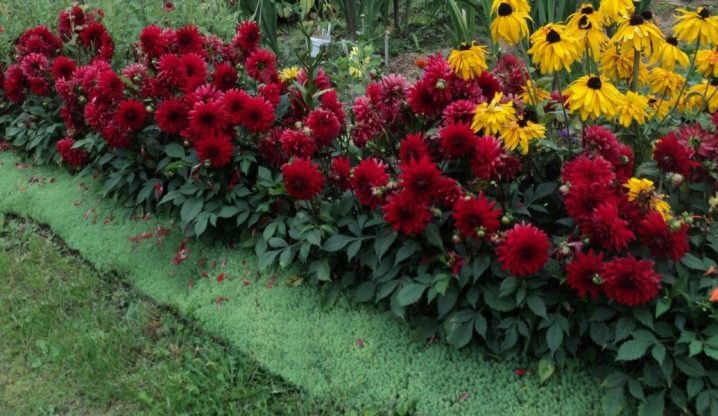
Growers note that small plants have a longer flowering period. In large buds, the petals quickly crumble. Low-growing dahlias are:
curb - 40-60 cm high, forms a lush bush with a lot of flowers;

- dwarf curbs - squat bushes 30-40 cm in height, look great in the foreground of planting;
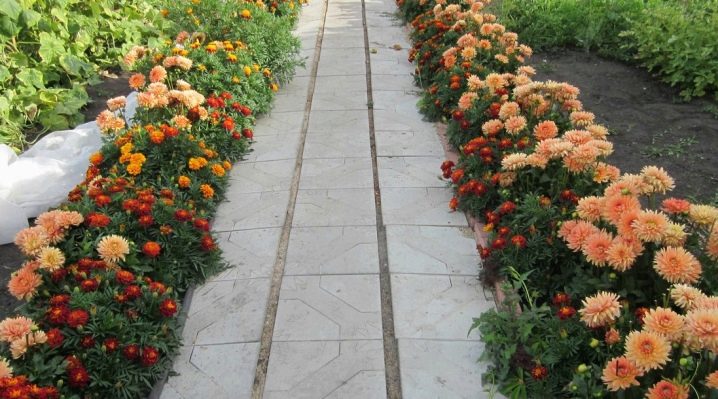
- dwarf potted - maximum plant height - 30 cm, suitable for growing in flowerpots.
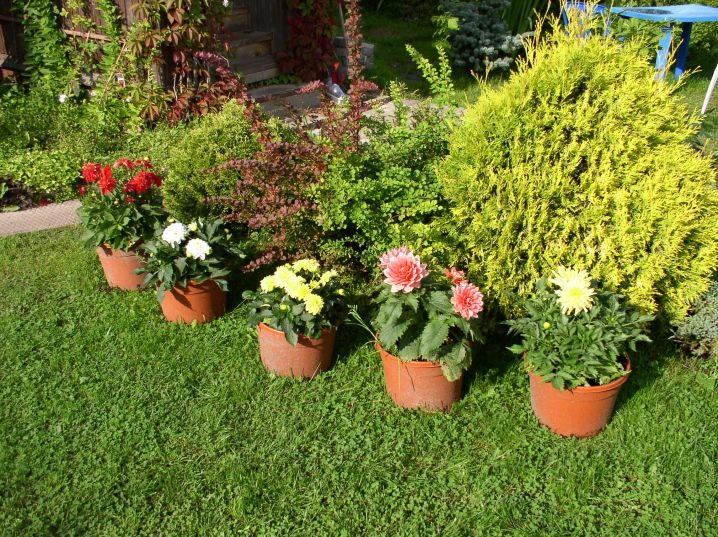
Experienced connoisseurs of dahlias know that the height of the plant primarily depends on the constituents of the soil and the growing conditions of the flower. The plant has earned its popularity due to its decorative properties: lush buds do not leave anyone indifferent. In addition, the flowers are completely unpretentious in terms of care, they adapt well even to unfavorable conditions.
During the growing season, they do not need any care at all. Growing dahlias is a pleasure.
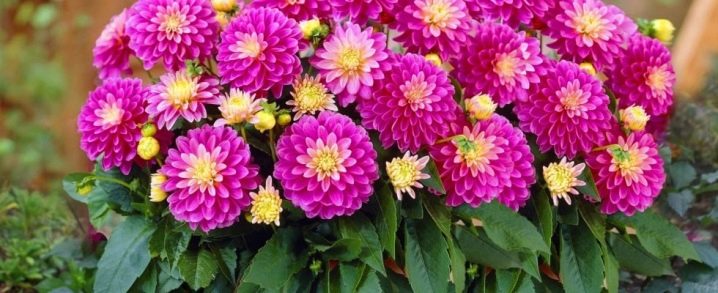
Each bush can form about 30 small flowers. They bloom in early summer and last until frost. The advantages of the plant include:
- long and violent flowering;
- a flower that has grown from sprouted tubers will release buds at the end of June;
- there is no need to form a bush;
- the stems are very strong, they can withstand even strong jerks of the wind;
- practically not prone to diseases and damage to parasites;
- variety of landing sites;
- fast growth;
- undemanding to light;
- good storage of tubers without additional maintenance.
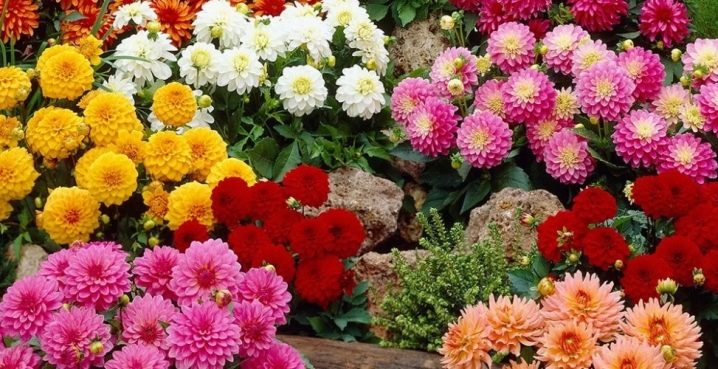
Varieties
The variety of varieties of curb dahlias is stunning. They differ not only in the structure of the bud: with one row of petals, double or semi-double, collar, but also in the most diverse color palette. Soft pastel colors change to rich bright ones, many varieties harmoniously combine multi-colored colors. The Dutch breeder Verver, after much work, bred a special subspecies of dahlia with double flowers.
All varieties are collected in a variety series "Galeri" (they are called so - Galeri dahlias).
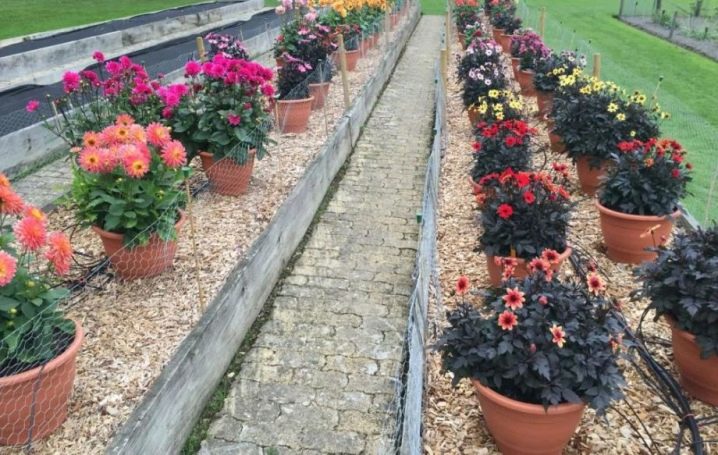
They differ in rather large inflorescences for compact bushes with a diameter of 10-12 cm. Strong and rather high peduncles make it possible to cut them for bouquets and compositions. There are quite a few varieties in the series; their names are often similar to the names of famous artists.
"Art Deco" - decorative undersized bush with flowers 12 cm. The outer side of pointed petals is orange, and the inner side is reddish-brown. It blooms from May to the beginning of frost.
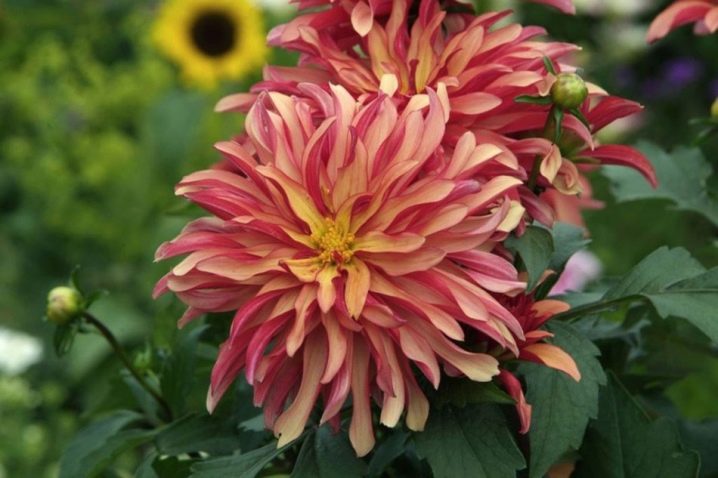
- "Leonardo" - a stocky variety, reaching 35 cm. The inflorescence looks like a basket with a diameter of 15 cm. The lingual flowers are painted in a pink tint at the edges, and the center has a convex yellow tone. It blooms with a large number of buds and keeps them for a long time.
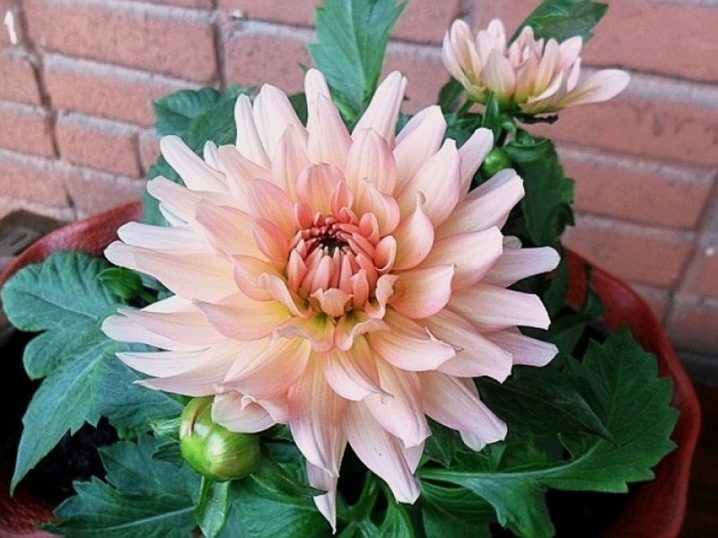
- "Monet" - the height of the bush can vary from 30 to 60 cm, depending on the quality of care and the size of the tuber. Leaf plates are rich green, inflorescences are white or with a slight purple tint. Reed petals, slightly bent down. For a short period of time, they can withstand subzero temperatures (up to -5 degrees).
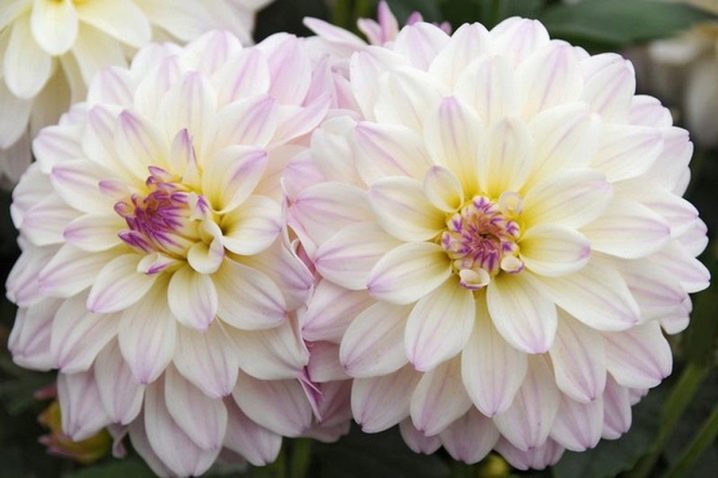
- "La Tour" - differs in the unusual color of the leaves, they are greenish with a burgundy tint. The flowers are baskets of a delicate violet-pink color; on the pointed tips it is more saturated, and near the base it is light.

- "Rivera" - belongs to dwarf varieties, has dark green leaves. The buds are hemispherical, tongue-shaped, consisting of different types of petals: in the center they are rolled into a loose tube, flat along the edges. Deep red color.
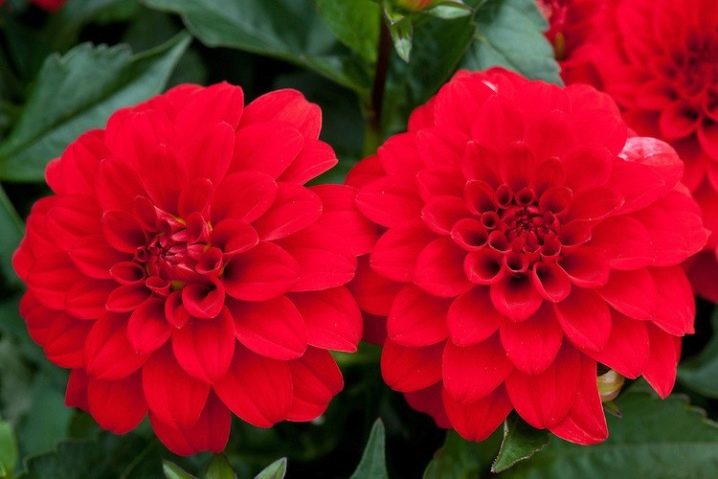
- "Vermeer" - also a squat, lush bush with a dark green color of leaf plates. The flowers are quite large, light orange, ligulate. The variety needs enhanced feeding, as it blooms extremely violently. The buds are in bloom from early summer to late autumn.

- "Cobra" - forms a bush up to 45 cm in height with large flowers having a diameter of about 14 cm. It blooms in different shades of reddish-orange tones. Outside, curved petals are rich in color, while inside they are lightish.

- "Serenade" - the bush is distinguished by its volume and beautiful double yellowish-white inflorescences-baskets. The bases of the flowers are rich, bright yellow, and the edges are almost white.
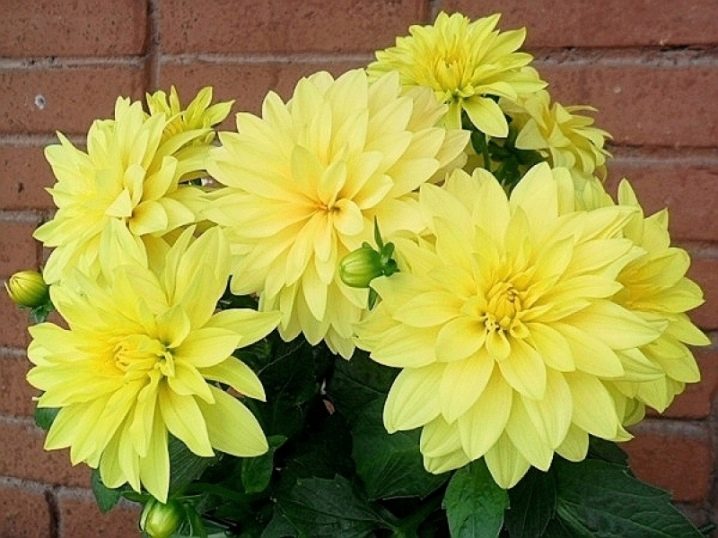
The “Melody” variety series also appeared in Holland. Plants are taller than Galleri's dahlias, reaching 55-60 cm. The inflorescences in the form of a reed basket have a diameter of 10-12 cm. Dahlias bloom for a long time, they tolerate transplants well.
- "Dora" - reaches 55 cm in height. The color of the flowers is quite spectacular: the base and center are yellow, and the tops and edges of the petals are pink, the colors have a smooth transition. The variety is very unassuming, it only needs lighting and infrequent moisture.
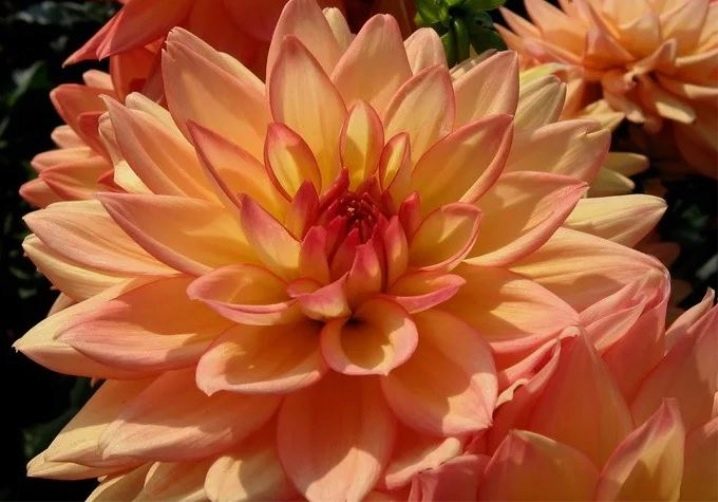
- "Fanfar" - with good care and the presence of fertile soil, it can grow up to 60 cm. The flowers are oval, with rounded tips and slightly wavy edges. Fuchsia buds, green leaves with a faint burgundy tint.
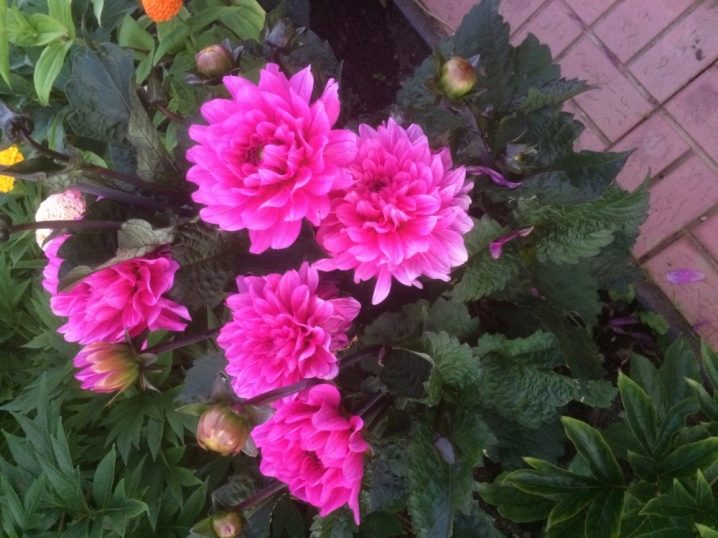
- "Allegro" - a small bush with large coral inflorescences. The base of the bud is yellow and the tops are light purple in tone. The leaf plates are colored dark green. Has a variety "Pink Allegro" with beautiful pink flowers.
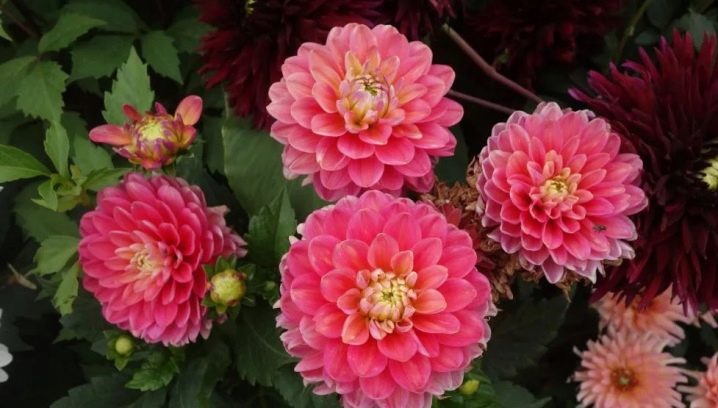
- "Harmony" - a rather lush bush with burgundy foliage and large double inflorescences. The petals are elongated, with two longitudinal grooves that converge towards the apex. The color is pink, the unopened floral leaves have a slight yellow tint.

- "Mambo" - a bush with dark red small inflorescences. The petals, slightly turned inward, are loosely positioned against each other. The center of the flower is colored in a darker tone than the edges.
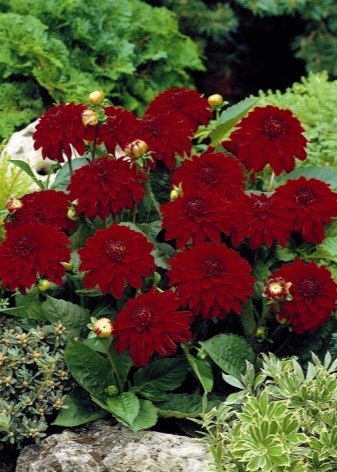
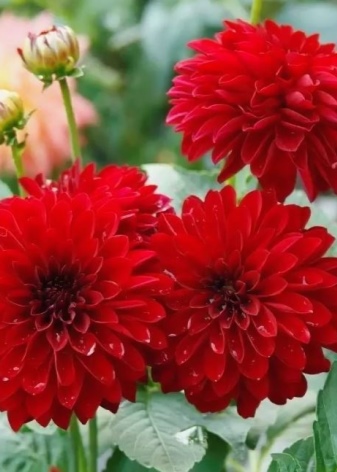
The Topmix variety series was created quite recently in the Netherlands. The varieties are characterized by small sizes up to 40 cm in height and inflorescences-baskets of a simple type, with small flowers of various colors. Dahlias "Topmix" are grown mainly by seed method.
- "Yellow" - a bush with proper care can reach only 25-30 cm. Small flowers look delicate, they consist of bright yellow tubular petals.
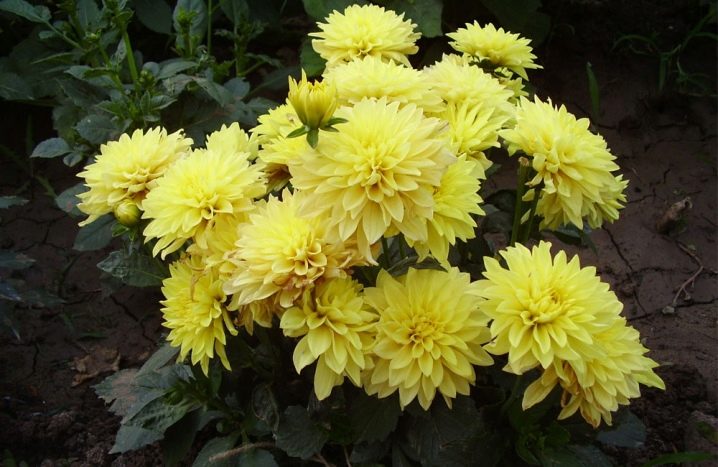
- "Vine Red" - a plant with bright green leaf plates and small inflorescences. The marginal petals are dark red and oval, the central ones are yellow. At some distance from the middle, a clear burgundy line is formed along the entire circumference.
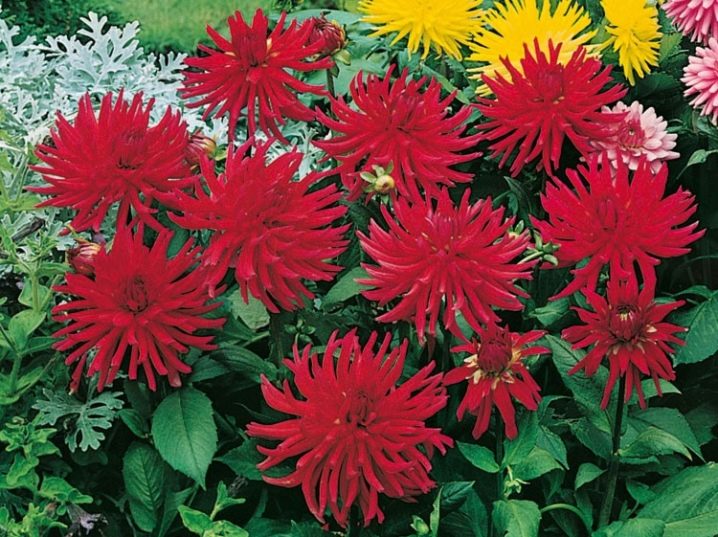
- "Sweetheart" - has an unusual color of buds. Closer to the center, they are white, mauve on the outside, and in the very center there are yellowish tubular petals.
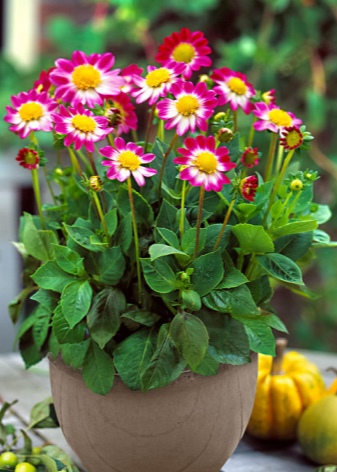
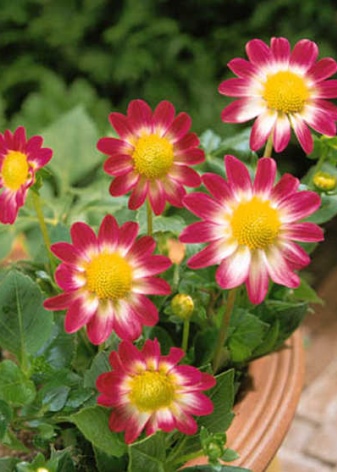
In floriculture circles, undersized varieties of dahlias of the old selection, propagated by seeds, are called the "Mignon" variety series. Although there is no such separate varietal series. They are sold in mixtures of different colors. Inflorescences can be either double or simple. Plants are unpretentious and do not require special care.
- Figaro - belongs to dwarfs, does not reach growth and 30 cm. Inflorescences-baskets are similar to chrysanthemum flowers. Small tubular petals in the middle are yellowish or orange, and the lateral ones are of very different colors. The plant is undemanding, it develops well both in open soil and in containers.
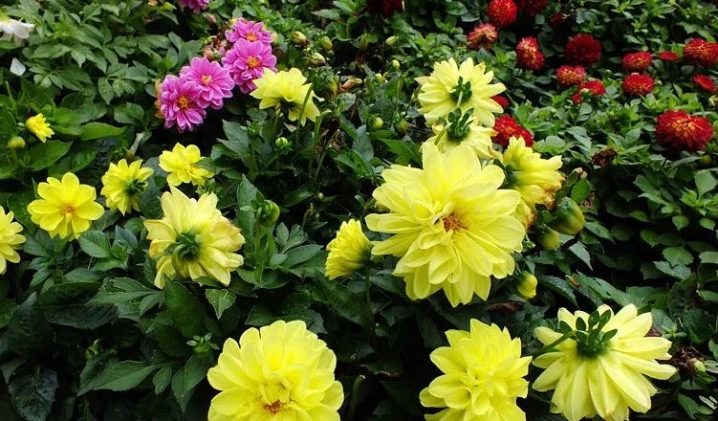
- "Funny guys" and "Piccolo" - also dwarf varieties, so similar that most gardeners consider them a single variety that has two names (in Europe - one, and we have another). The flowers are characterized by one or two rows of petals of various shades.

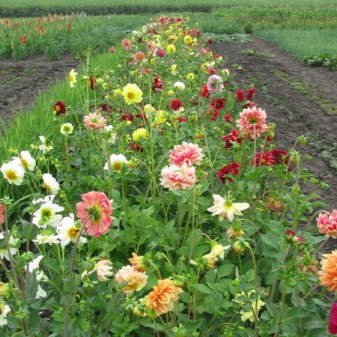
In addition to these series, there are many more varieties of dahlias.
- "Happy Kiss" - Dutch variety. In appearance, the flowers look more like chrysanthemums or chamomile. The color is dominated by bright colors, mainly orange.
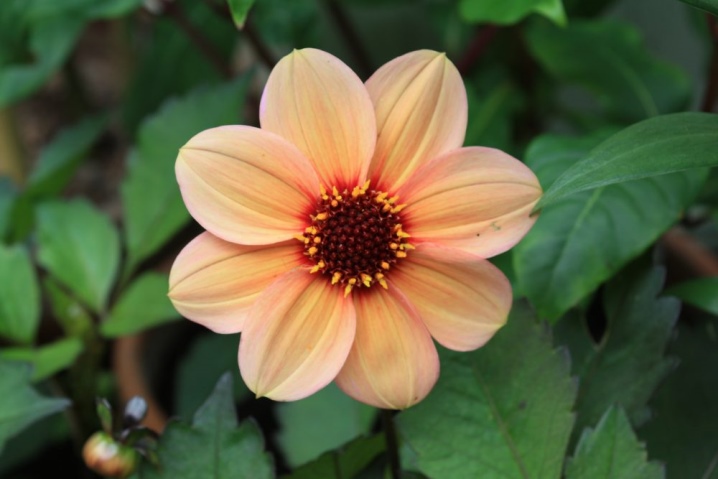
- "Romeo" - flowers with single-row petals of saturated scarlet color. In shape, the inflorescences are the same as in the previous variety.

- "Children of the Cardinal" Is a fairly popular variety. Flowers have a different color of petals, but with a unique bronze tint.
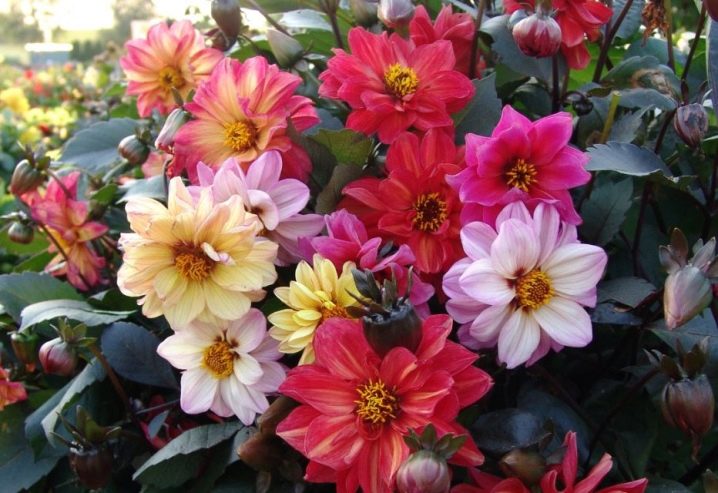
- "Boogie Woogie" - differs in unusually lush flowers, their border is bright pink, and yellow closer to the center.
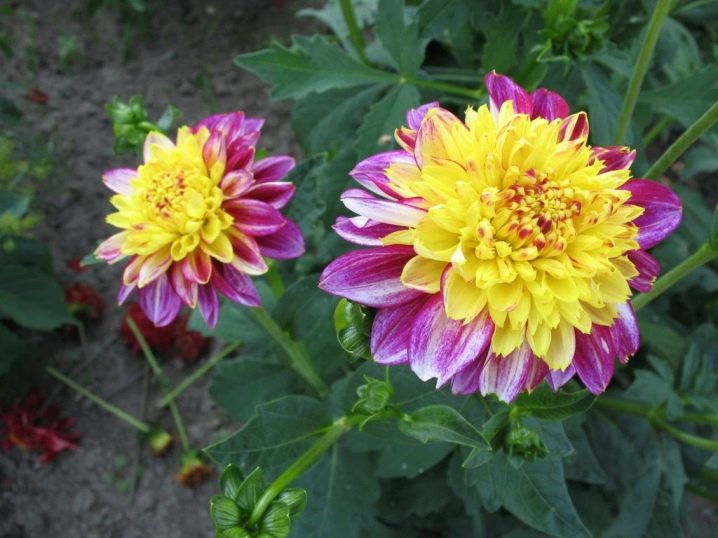
- "El Nino" - a variety with large burgundy buds.
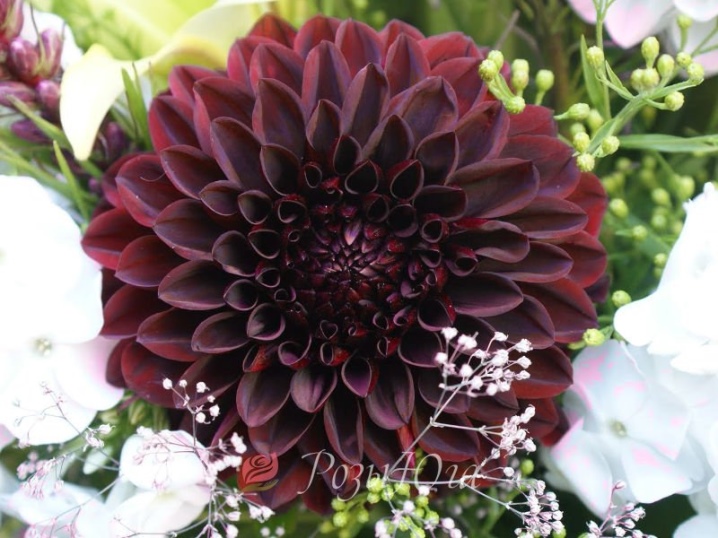
- Stars Lady - belongs to the cactus varieties of dahlias. Rose petals are elongated, with pointed tips. The flowers themselves are quite voluminous, the diameter can reach 25 cm.
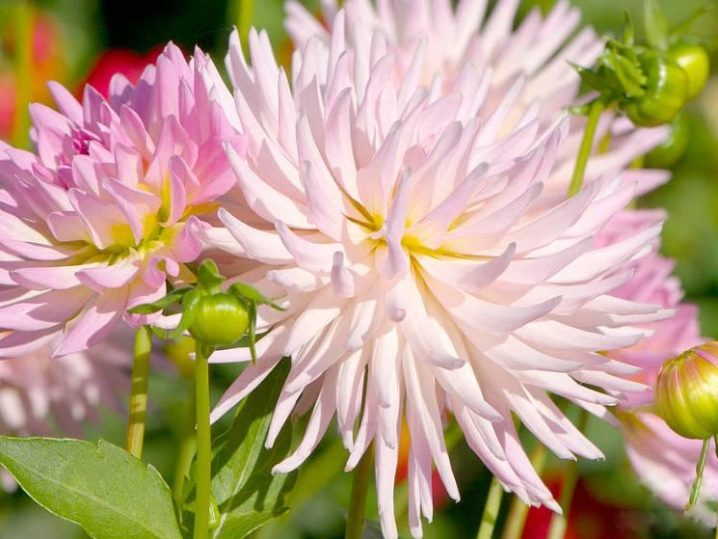
- Aspen - one of the most beautiful and famous varieties in our country. Belongs to semi-cactus varieties. Inflorescences are symmetrical, with pointed petals. It blooms with different tints of white: from snow-white to cream.

- "Sunny Boy" - pompous variety with small bright yellow buds.

- "Impression Fabula" - belong to the category of collared dahlias. It looks very impressive: the outer petals are wide, painted in purple, and closer to the core are needle-like inner leaves of a lighter tone.
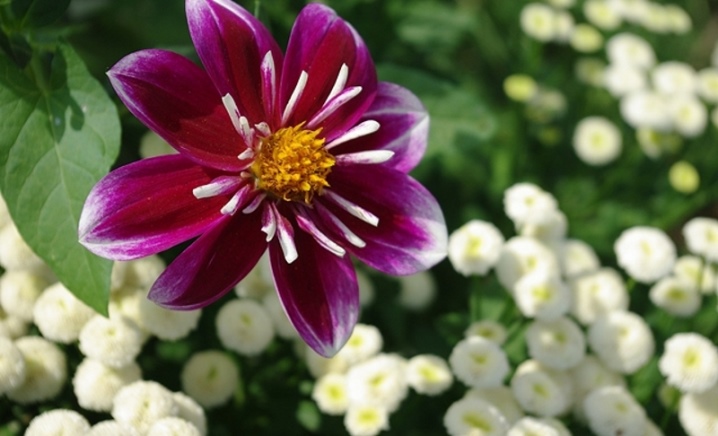
- "Goldband" - has yellow non-double flowers.
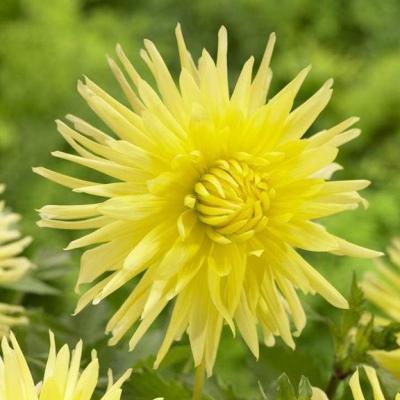
Dahlia varieties such as “Red pygmy”, “Little tiger”, “Ecstasy”, “Red Rock”, “Berliner Kline”, “Larris Love”, “Princess Grace” are also distinguished by their magnificent appearance.
How to plant?
Border dahlias are planted in open soil when a stable above-zero temperature appears at night and the threat of frost has completely passed. The landing site is sunny and calm. The soil should be well loosened and fertilized, humus or wood ash can be used. In addition, for greater looseness, drainage is added, it can be sand, peat, expanded clay or fine gravel. Regardless of the planting site - open soil, flowerpot or container, drainage should be of high quality.
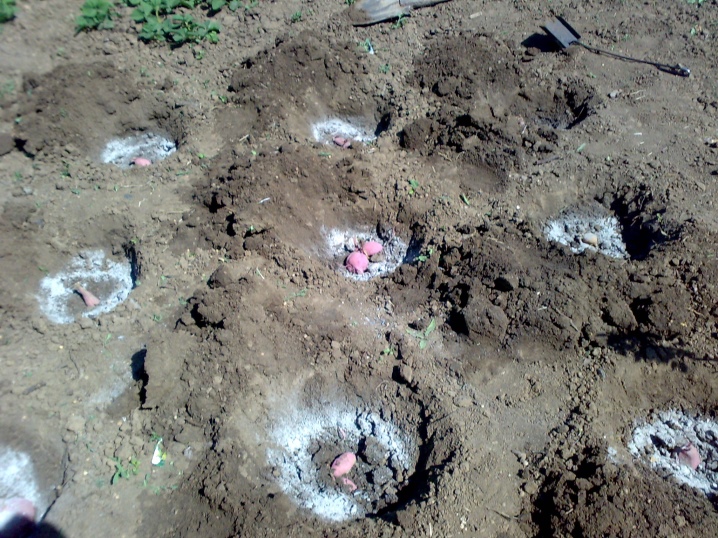
It is better to select containers that are voluminous so that the plant is comfortable in them. When planting in the garden, the tubers should be buried quite deeply, the distance between the plants should be maintained at 30-40 cm. The sprouts should be placed at the top, otherwise the flower will not be able to germinate. After planting, dahlias are mulched (sprinkled with finely ground tree bark) and moistened.
In order for the plant to grow properly, support stones are used, which also help to decorate the flower bed.
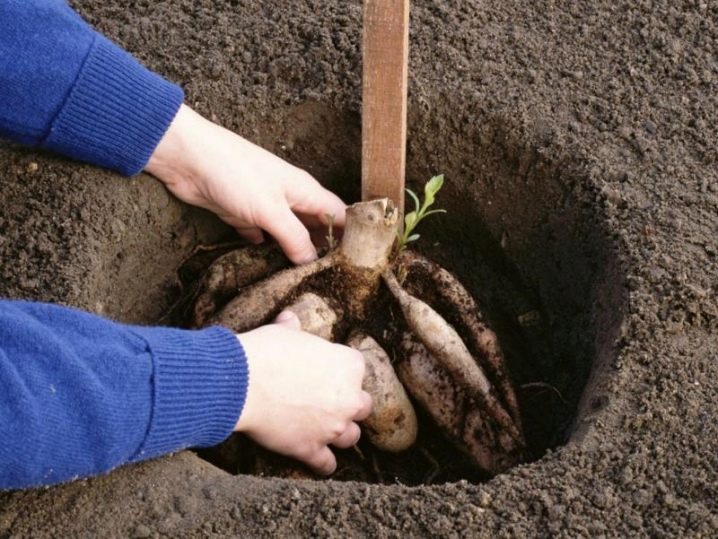
How to care?
Dahlias do not require special care, all they need is warmth and moisture. At high temperatures, the bushes are watered twice a week. You need to moisten the root system and avoid the accumulation of liquid on the leaf plates. In order for moisture to better enter the soil, it is recommended to huddle it before watering. Fertilizers are applied twice a month. Withered buds must be removed immediately to form new ones. Before freezing, the tubers are dug up and stored, the potted flowers are brought into the wintering room.
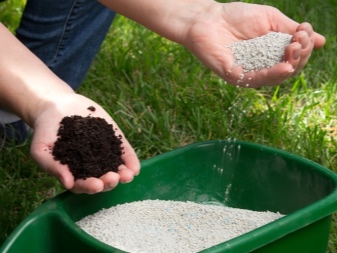
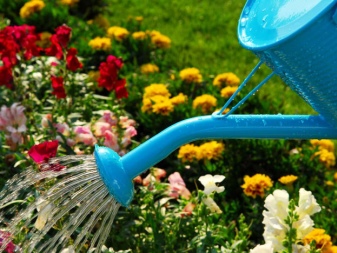
Reproduction
Low-growing dahlias are bred in several ways:
- dividing the rhizome;
- seeds;
- cuttings.
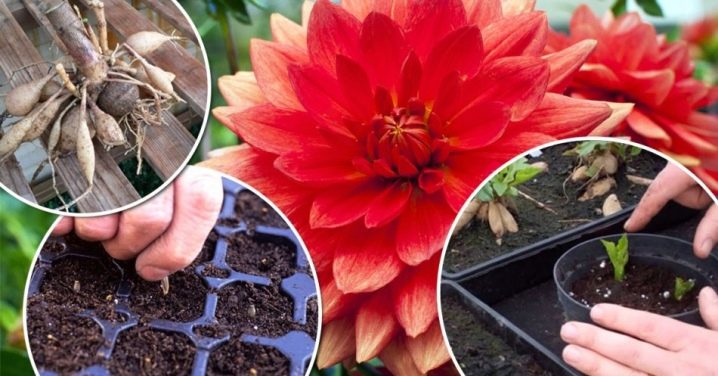
The most effective way to propagate dahlias is by dividing the tuber. In autumn, after digging, the rhizome is carefully separated, each part should have a root collar and at least 2-3 buds. If the tubers are not divided, over time the plant loses its decorative effect and varietal characteristics. Cuts on parts of the root must be treated with chopped charcoal. Store them in a dark, dry and cool place.
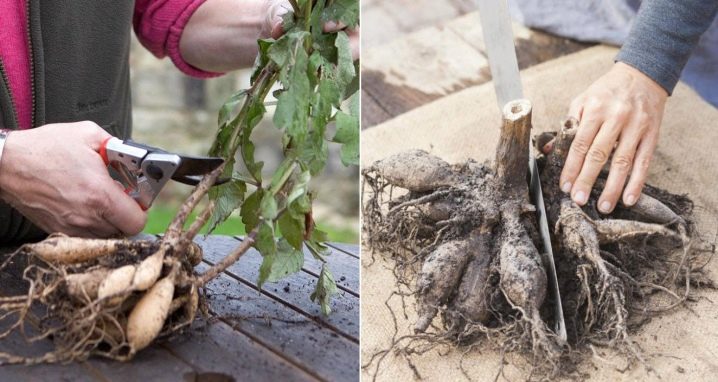
To speed up the flowering of the bushes, the tubers are planted in pots with a flower substrate and peat. Only one tuber is placed in each container, otherwise the roots may become tangled, which is fraught with damage during planting. The pots can be kept in any warm place. If the tubers are not germinated, the flowering of plants will begin much later. Dahlia seeds have good germination - sprouts appear already 4-5 days after sowing.
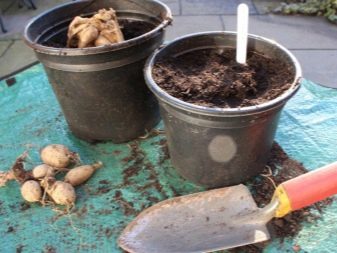
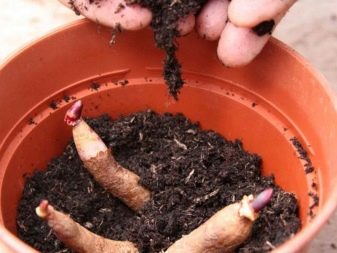
For greater productivity, greenhouse conditions are created for them, that is, they are covered with film or glass, not forgetting to moisturize and ventilate. Reproduction seeds not very popular, since the bushes bloom only three months after sowing. Although for varietal series "Mignon" and "Topmix" this method of cultivation is practiced very often.
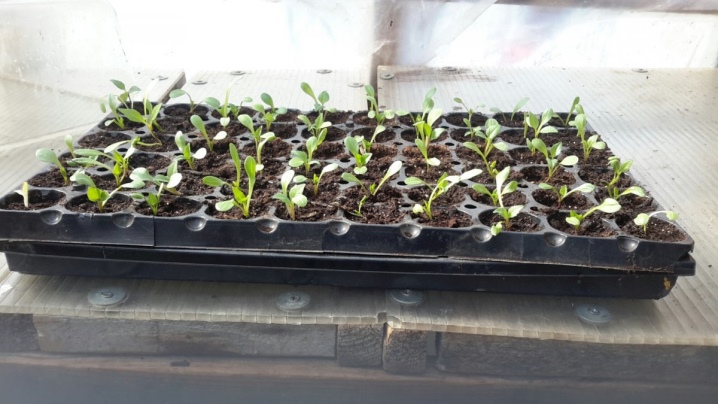
For cuttings use cut shoots about 10 cm long. It is worth noting that this procedure should be carried out in the summer. The cuttings are treated with root formers, planted in a well-moistened soil with river sand and covered with polyethylene. After two weeks, the roots appear and the seedlings grow.
When using this method, large inflorescences are formed and all the characteristics of the variety are preserved.
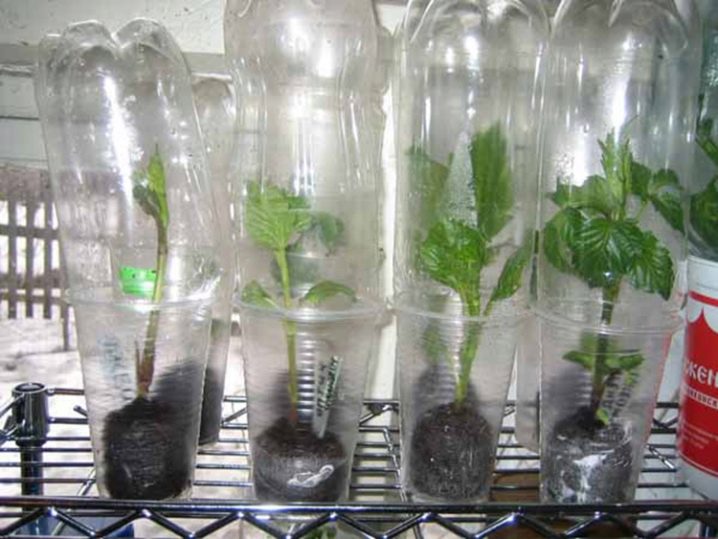
Storage
When frost appears, dahlia tubers are dug up and stored in dark, dry rooms. All buds and leaves must be cut off for several days before digging up. The remnants of the earth are carefully removed from the dug out rhizomes, all cuts are sprinkled with a composition of chalk and coal. To keep the tubers well, they need to provide a sufficient level of moisture and fresh air. Florists recommend using peat, ash or sawdust for their storage.
The paraffin wrapping method is also used, although many use a simple newspaper or soft rag for this. It is better to store tubers in wooden boxes or boxes.
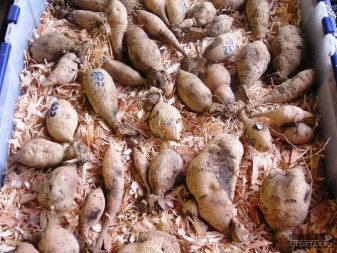
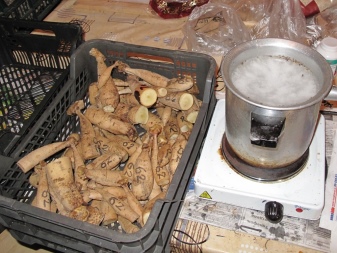
Diseases and pests
Border dahlias are quite resistant to disease, but due to excessive moisture they can be affected by diseases such as bacterial cancer, viral mosaic or powdery mildew. The first two diseases are incurable, the bushes must be destroyed. In the areas where they grew, dahlias cannot be grown for at least 5 years. Powdery mildew is fought with colloidal sulfur. Of the parasites that destroy bushes, the most famous are:
- thrips and aphids removed with saturated soapy water and karbofos;
- wireworm expelled with hexachlorane;
- woodlice and slugs they are afraid of potassium salt and metalhecide; from folk remedies, tinctures from celandine and wormwood are effective.

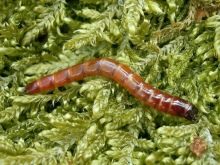
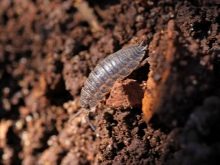
As a preventive measure, before planting a dahlia, the soil should be treated with potassium permanganate.
For information on how to plant low-growing dahlias, see the next video.







































































































The comment was sent successfully.